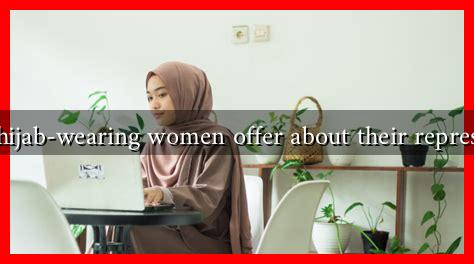-
Table of Contents
What Insights Do Hijab-Wearing Women Offer About Their Representation in Media
The representation of hijab-wearing women in media has been a topic of significant discussion and debate in recent years. As more women choose to wear the hijab as a symbol of their faith and identity, understanding their perspectives on media representation becomes crucial. This article explores the insights offered by hijab-wearing women regarding their portrayal in various media forms, including film, television, and social media.
The Importance of Representation
Representation in media is vital for several reasons:
- Visibility: It allows marginalized groups to see themselves reflected in society.
- Normalization: It helps normalize diverse identities and experiences.
- Empowerment: Positive representation can empower individuals and communities.
For hijab-wearing women, representation can significantly impact their self-image and societal perceptions. However, the portrayal of these women often falls short of authenticity and depth.
Common Stereotypes and Misrepresentations
Hijab-wearing women frequently encounter stereotypes in media that can lead to misrepresentation. Some common stereotypes include:
- Oppression: Many media portrayals depict hijab-wearing women as oppressed or submissive, ignoring their agency and individuality.
- Exoticism: The hijab is often fetishized, reducing women to mere symbols rather than complex individuals.
- Homogeneity: Media often presents hijab-wearing women as a monolithic group, failing to acknowledge the diversity within the community.
These stereotypes can perpetuate harmful narratives and contribute to societal misconceptions about Muslim women. A study by the Institute for Social Policy and Understanding (ISPU) found that 67% of American Muslims believe that media portrayals of Muslims are negative, which can lead to increased discrimination and bias.
Voices of Hijab-Wearing Women
To gain a deeper understanding of their representation, it is essential to listen to the voices of hijab-wearing women themselves. Many have taken to social media platforms to share their experiences and challenge stereotypes. Here are some insights they offer:
- Desire for Authenticity: Many hijab-wearing women express a desire for authentic representation that reflects their real lives, struggles, and triumphs.
- Complex Narratives: They emphasize the importance of showcasing diverse stories that go beyond the hijab, highlighting their achievements, aspirations, and everyday experiences.
- Empowerment through Visibility: Women report feeling empowered when they see relatable characters in media who wear the hijab, as it fosters a sense of belonging and acceptance.
For instance, the Netflix series “Ramy” features a hijab-wearing character who navigates her faith and identity in a contemporary setting, providing a more nuanced portrayal of Muslim women. Such representations can help dismantle stereotypes and promote understanding.
The Role of Social Media
Social media has become a powerful tool for hijab-wearing women to share their stories and challenge mainstream narratives. Platforms like Instagram and TikTok allow them to:
- Showcase Diversity: Women from various backgrounds share their unique experiences, showcasing the diversity within the hijab-wearing community.
- Challenge Stereotypes: Many use their platforms to debunk myths and stereotypes associated with the hijab.
- Build Community: Social media fosters a sense of community among hijab-wearing women, allowing them to connect and support one another.
For example, the hashtag #HijabFashion has gained popularity, allowing women to express their style while wearing the hijab, thus redefining its representation in fashion and media.
Conclusion
The insights offered by hijab-wearing women regarding their representation in media highlight the need for more authentic, diverse, and empowering portrayals. By challenging stereotypes and sharing their stories, these women contribute to a broader understanding of their identities and experiences. As media continues to evolve, it is essential for creators to listen to these voices and strive for representation that reflects the richness and complexity of hijab-wearing women’s lives.
In summary, the representation of hijab-wearing women in media is not just about visibility; it is about authenticity, empowerment, and the celebration of diversity. By amplifying their voices and stories, we can work towards a more inclusive media landscape that honors the experiences of all women.
For further reading on this topic, you can explore resources from the Institute for Social Policy and Understanding.

